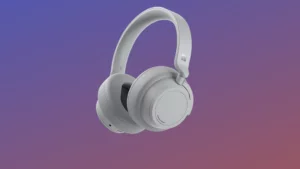
Microsoft Surface Headphones 2 Review
The audio market is full of wireless headphone products. There are many options to choose from, and each differ in their features and overall quality. The Surface Headphones 2 from Microsoft are one option to consider. They are an updated version of the Surface Headphones and come with several upgrades. But are they worth buying?
In this review, I will cover the various features and capabilities of the Surface Headphones 2. I will also give my thoughts on the headphones and whether I would recommend others to buy this product. So, without further ado, let’s get started.
Pros and cons
Pros | Cons |
Adjustable sound EQ: good sound quality | Portability |
Good call quality: Noise cancelling mic | Top headband unfomfortable with long hair and larger heads |
Adjustable noise cancellation: active and passive | Battery life not as long as other wireless headsets |
Bluetooth multipoint connectivity | Touch controls take some getting used to |
Sleek design | |
Fast recharge time | |
Surface app improves usability | |
Useful controls |
Price and availability
On the Microsoft website, the Surface Headphones 2 cost $349.99 CAD. At the time of writing (August 15, 2022), they are on sale for $309.99 CAD. On Amazon, they cost $357.71 CAD. Outside of the Microsoft website and Amazon, you can purchase the headphones from PC Canada, Best Buy, and other online tech retailers. You can also buy the headphones in person from stores like Staples or The Source.
There are two colour options for the Surface Headphones 2. You have a choice between Light Grey or Matte Black. The headset comes with a carrying case, auxiliary chord, and a USB-C charging cable.
Battery life
The Surface Headphones 2 are advertised as having 18.5 hours of battery life for music listening. For Microsoft Teams calls, the battery life is 15 hours. I averaged about 18 hours of battery life, which I thought was decent. I was able use the headphones for four days straight without having to recharge them. However, the battery life is still low compared to other wireless headphones. The Sennheiser HD 350BT has up to 30 hours of play times. There are various factors that affect the battery life. For example, having noise cancellation at the highest setting will drain the power faster. It took me about 1:17:00 (one hour seventeen minutes) to fully recharge my headphones from 0% to 100%. I thought this was very fast.
The Surface Headphones 2 will give you updates on the battery power. Each time you turn the headphones on, a digital voice will tell you how much listening time you have left. If the battery power is low, the headphones will tell you its time to recharge. The Surface app will also display the current battery percentage and the number of listening hours remaining. Thanks to these updates, my headphones never ran out of power.
Sound quality
For sound quality, the Surface Headphones 2 has five preset equalizers: Flat, Classical, Jazz, Pop, and Rock. The headset is automatically programmed to the Flat setting. But if you want to edit the EQ, you can make your own audio presets. Simply open up the surface app, adjust the sound levels, and give your preset a title. The app will save your preset, and you can make up to 10 different ones.
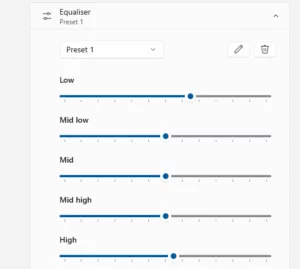
The EQ editor on the Surface app. Source: Rank-It.ca
For the flat preset, the sound quality was quite good. The lows, mids, and highs, were effectively balanced. I did notice that the bass frequency stood out among the three. With most songs, I was also able to hear the high and medium tones. The mix of frequencies produced a detailed, textured, and crisp sound. Ludwig van Beethoven’s “Symphony No.7” sounded bright and vibrant with great detail (each instrument in the orchestra could be heard). Switching things up, Thin Lizzy’s “The Boy’s are Back In Town” was brought to life with the perfect blend of strong bass, pounding drums, and aggressive guitar tones. Lastly, Marvin Gaye’s “What’s Going On” had me bopping along to the funky and soulful rhythm, which was smooth and richly layered.
Unfortunately, there were certain songs where the bass was too strong; it would drown out the other instruments and vocals. Some songs sounded muddy and flat without much separation between the instruments. But this might be due to the quality of the recording.
I also tested out the headphone’s sound quality when it was in wired mode. For my test, I used the provided chord, but any 3.5mm audio cable will work. When using the aux chord, I did not have access to the EQ presets. There was a noticeable drop in sound quality. While it was still ok, the quality was inferior compared to the one you get in wireless mode. It sounded was much more bland. The songs were not as dynamic and the bass, treble, and middle frequencies were all subdued.
While it’s not 100% perfect, the sound quality of the Surface 2 Headphones is certainly one of the best I have ever heard. Just make sure you listen in wireless mode. In my view, the aux chord is a backup option in case the Bluetooth connection does not work.
Call quality
I primarily used the Surface Headphones 2 for Microsoft Teams video calls. The headphones seamlessly integrated with the app; I did not have to change any settings. I could hear all the people in the call clearly. And in return, the other members heard my voice as well. I noticed that the headphone’s mic cancels out most background noises. This is handy if you have loud pets or have to take a call in a busy area.
Bluetooth connectivity
The Bluetooth connectivity for my Surface Headphones 2 was strong. The connection never dropped out or stuttered. I was able to stand a few feet away from my device and remain connected. The headphones also have excellent multipoint connection. I paired the headphones with my phone and laptop and it seamlessly switched between the two. I could listen to music on my phone and then switch over to my laptop without having to disconnect/reconnect it to either device. All I had to do was pause the audio on the device before making the switch.
Noise cancellation
The Surface Headphones 2 have 13 levels of active noise cancellation. On the Surface app, there are four categories: Enhanced, Low, Medium, and High. The noise cancelling levels are adjusted by turning the dial on the left ear cup. The noise cancellation for these headphones was very strong. At the highest level, I could barely hear anything. The only sound I could hear were the voices of people talking near me. Even then, the voices were faint and muffled. Other than that, most noises were cancelled out. Playing music further drowns out ambient noises. Even on the lower settings, most sounds were muffled. Only things up close could be heard. For example, I could still clearly hear the clicks of my keyboard keys, but those of my coworkers were more muted.
It did take some time for me to get used to the noise cancellation. I’ve never had noise cancelling headphones before, so having background sounds blocked out was a new experience for me. However, I eventually got used to the feeling.
To further test the noise cancelling feature, I used the headphones on the bus. I normally listen to music with my in-ear headphones. With these, I can hear plenty of sounds, such as rattling whenever the bus hits a pothole on the road. With the Surface Headphones 2, I could hardly hear any of those noises; I could listen to my music undisturbed. The only problem was when the bus hit a rough patch of the road, the music would cut out for a split second. While this interruption only lasted for a few seconds, it was very annoying, especially when the road was extremely bumpy.
I had an issue with the noise cancelling feature during audio calls. When speaking, it was hard to hear my own voice. This made it difficult to gauge how loud I was speaking. Since I work in an office, I didn’t want to disturb my coworkers by talking too loudly. My solution was having only one ear covered with the earphone cup. Doing this let me to hear my voice better; I could tell how loud I was talking. It should be noted that this issue I have described is not universal. Some people will have no issues with the noise cancellation during calls. This was purely a personal issue of mine.
Another problem I encountered was with the Enhanced level. When set to that level, a loud, thundering sound comes through. The only thing I can compare it to is the sound you hear while flying in an airplane. This sound is very annoying and overbearing at times. That’s why I had my headphones set to the highest noise cancellation level. I couldn’t hear someone call my name, but it was much better than listening to the roaring white noise while in the Enhanced level.
Comfort and fit
To test the comfort and fit of the Surface Headphones 2, I wore them for several hours at a time. I found the two ear cups to be quite comfortable. Each one has foam padding which provides soft cushioning. The ear cups also fit my ears well. With other over-ear headphones, my ears get sore after two hours. But this did not happen with the Surface Headphones 2. I used the headset for several hours without any ear soreness. The only problem I had with the earcups was with ventilation. Since they completely cover your ears, there is little room for airflow. By the one-hour mark, my ears started to get hot and slightly sweaty. At several points I took the headphones off to let my ears cool down. But I’ve had this issue with other over-ear headphones, so this is nothing new for me.
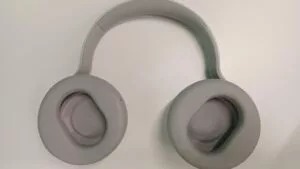
The two earcups. Source: Rank-It.ca
Like other wireless headsets, The Surface Headphones 2 lets you adjust the length. I set my pair to the longest possible, and that seemed to work well. On the shorter lengths, I noticed more pressure was added to my head. To prevent any sliding, the top headband has small layer of foam. This helped the headphones stay firmly on my head. But there was a downside to the headband foam. After 45 minutes of use, it started to cause a soreness on the top of my head. At first, it was a minor nuisance. But after one hour, the soreness became more noticeable. I eventually had to take off the headphones for a while in order to alleviate the pain. I do have a working theory as to why the headband causes the soreness. I believe it’s related to how long the person’s hair is. After getting a haircut, I noticed that the soreness was not as strong. When I had longer hair, the feeling was more pronounced. I think that the headband drags on long strands of hair, causing the painful sensation. However, this is just a theory of mine with no hard evidence. The soreness still occurred after my haircut, but it was less frequent and not as noticeable. My second theory is that the headband causes soreness for people with larger heads; more pressure is applied.
With all that being said, the Surface Headphones 2 fit comfortably on my head. In fact, it was one of the most comfortable over-ear headphones I have used. The only caveat was I had to take frequent breaks from using it.
Design
In this section, I will also discuss usability and portability. They will be in their own subsections. But I’ll kick things off with the overall design.
The Surface Headphones 2 has a minimalistic look. Even though the headset has numerous controls, there are only two buttons: the power/Bluetooth button and the mute button. Additionally, there no gears, screws, or bolts present. This adds a sleekness to the Surface Headphones 2. In comparison, other wireless headsets have numerous buttons, screws, bolts, and other elements on their frame. As a result, the headset looks bulky and complicated. In terms of the headphone’s aesthetic, nothing really jumped out at me. However, I do like the subdued look. To me, simplicity can be more attractive than complexity; a complicated design can be too overwhelming. When it came to colour, I had the Light Grey Version. While it looked nice, I thought the matte black version was more appealing. The grey was a little to bland for me, while the black was eye-catching.
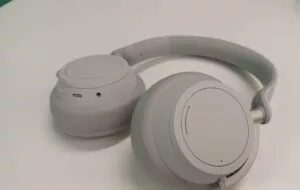
Source: Rank-It.ca
Usability
The Surface Headphones 2 was user friendly, but there was a small learning curve, and some issues arose. All I had to do was turn off the headphones and try again. The touch controls were intuitive but took some getting used to. I had to learn what the various touch gestures did. For example, a single tap pauses or plays music, while a triple tap will play the previous song. I sometimes mixed up the gestures. Other times, my tap did not register; tapping the centre usually gives the best results. But once I got the hang of it, the touch controls were a useful tool; I could pause or play my music without having to use my phone or laptop. The sound and noise cancelling dials were the easiest controls to learn and use.
For further information on the controls for the Surface Headphones 2, click here. Please note that the video on the webpage is for the original Surface Headphones. The updated model does not have Cortona as the built-in digital assistant. The headphones still work with various digital assistant like Siri or Google Assistant. Other than that, the controls are exactly the same.
Portability
Portability for this headset was ok, but it could have been better. The carrying case was good for storage and for traveling. The case also provides added protection for the headphones when they’re packed away in a suitcase. The earcups swivel 180 degrees, which makes it easier for them to fit into the case. The downside though is that the case is large, which sometime got in the way when my backpack was already full. Another downside is that the headphones do not fold up like other wireless headsets. This further hinders the portability of the Surface Headphones 2.
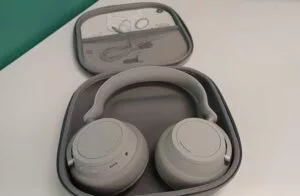
Source: Rank-It.ca
Accessories
Included with the Surface Headphones 2 is a carrying case, a USB-C charging cable, and an auxiliary audio cable. As mentioned earlier, the carrying case is great for storing the headphones. It also comes in handy when you take the headphones with you on vacation. The auxiliary cable is a nice backup option in case the Bluetooth connection fails. However, as I touched on earlier, the sound quality suffers when the headphones are in wired mode. The Microsoft Surface app is a useful tool for managing your Surface Headphones 2. It’s free on the Microsoft Store, Apple App Store, and Google Play. It is supported on computers and smartphones. On the Surface app, you can edit the sound EQ, change the volume or noise cancellation level, change the device language, and create a name for your headphones. There are also other settings you can adjust, like turning the touch controls on or off. Lastly, there are two tutorial videos on how to use the Surface Headphones 2.
The app does have some glitches. Sometimes the smartphone version failed to connect with my headphones. Other times it would not refresh. The only solution was to turn the headphones off and power them on again. Although they weren’t the end of the world, the glitches were annoying when they occurred. Having a refresh button on the app would make things much easier.
The Surface app was a useful tool that improved the usability of the Surface Headphones 2. It gave me greater control over the headphones plus it provided useful information. Despite the minor technical issues, the app was the most helpful/effective accessory by far.
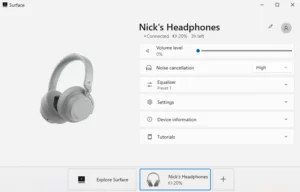
The desktop version of the Surface app. Source: Rank-It.ca
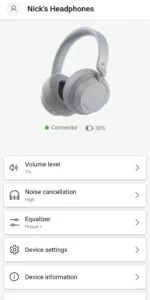
The mobile version of the Surface app. Source: Rank-It.ca
Verdict
Overall, the Surface Headphones 2 was a solid, user-friendly wireless headset. Pairing the headphones to a device was quick and easy, and the Bluetooth connection was strong. Additionally, the multipoint connectivity was seamless. The controls were intuitive, and the sound quality was excellent. I would definitely recommend using these headphones with the Surface app. Doing so will improve the performance and usability of the Surface Headphones 2. The design was sleek and modern looking. I though the light grey colour was a little bland, but this is just my personal opinion.
There are some areas of improvement. The battery life was strong, but it is much lower compared to other headsets. Bumping the battery up to at least 24 hours of play time should be an update Microsoft considers for their next pair of wireless headphones. The bright side is that the recharge time is quick. Even though the controls were easy to use, there was slight learning curve when it came to the touch controls. Portability could have been better. The case is a bit too bulky, and the headphones do not fold up. Lastly, the top of the headband can cause soreness for people with long hair or large heads.
Even though it has its problems, I enjoyed the Surface Headphones 2. It is a good wireless headset with tons of value for its price. If you are looking for a no-nonsense noise cancelling wireless headset that gets the job done, look no further than the Surface Headphones 2.
Specs
Dimensions |
|
Weight |
|
Exterior | Matte Black or Light Grey |
Battery life |
|
Charging time | Full charge in 2 hours |
Compatibility |
|
Buttons/controls |
|
Read more
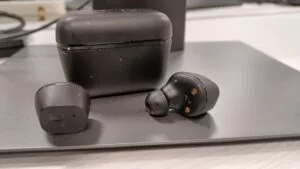
Sennheiser CX True Wireless Earbuds Review
Looking for a good pair of wireless earbuds at a reasonable price. Check out this review to learn more.
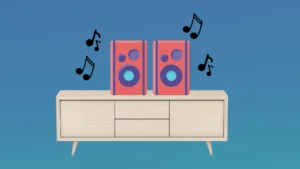
The Best Bookshelf Speakers in Canada
In today’s world, there are many ways to listen to music.
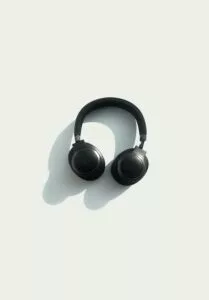
The Best Wireless Headphones in Canada
Tired of untangling earphone wires? That’s where a pair of good wireless headphones come in handy.
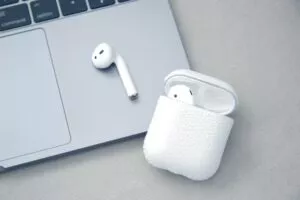
The Best Wireless Earbuds in Canada
We’ve gone through all those wireless earbud reviews and we’ve compiled a list of the best options for you.